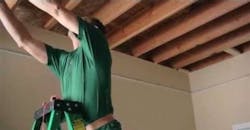When Is It a Mistake to Fix a Mistake?
Contractors who discover a defect in their work find themselves between a rock and a hard place. They can ignore the problem and risk liability, or fix it and risk destroying evidence—also known as “spoliation.” If litigation develops down the road, contractors who destroy evidence, even with the best of intentions, can wind up paying damages as assessed by a court.
Unfortunately, there is no easy way to balance these competing interests. Defects that compromise a building’s structural integrity can cause injuries and property loss. Construction errors also result in delays that tend to roll downhill, throwing subcontractors off schedule and jeopardizing the entire project. In many cases, it’s also impossible to track down the exact party responsible for the defect. Equally problematic, the subcontractor at fault may not be trustworthy or skilled enough to remedy the defect.
Spoliation issues can arise even when contractors make good-faith repairs. Whenever evidence is destroyed, courts consider a number of factors to determine whether a contractor should be penalized for making a repair.
Intent. The court’s primary concern is the contractor’s intent. Did the contractor act specifically to destroy evidence, or was the spoliation necessary to prevent harm and address safety concerns on the jobsite?
Notice. Contractors who properly notify owners, potentially responsible parties, and other involved persons before acting generally fare better than those who don’t.
Injury to the case. Courts try to determine just how much the spoliation may have hurt the case. If other evidence exists that provides insight regarding the defect, it lessens the effect of the spoliation.
Protect Yourself
You may not be able to avoid spoliation claims, but the following steps could reduce your exposure and minimize the loss of evidence if litigation later develops.
- Gather information. When a defect is discovered, gather information about the parties who may have caused the problem.
- Notify responsible parties. Prior to repair, notify all subcontractors who may be responsible and give each an opportunity to inspect the defect and assemble evidence, such as reports and photographs.
- Ask an expert. Contractors well-versed in litigation generally ask for an expert opinion regarding the defect.
- Announce the repair. When it’s time to make repairs, notify all parties involved by return receipt so you can show that you provided notice. Include the name, address, and contact number for the parties making the repair, as well as the date the work is scheduled to commence.
- Allow for supervision. Every potentially responsible party should have a chance to supervise the repair.
Alexander Barthet, a Board Certified Construction Attorney, manages The Barthet Firm, an 11-lawyer construction law firm in Miami, and maintains TheLienZone.com construction law blog. [email protected]
This article is for informational purposes only and is not legal advice. Consult your own lawyer, as laws may have changed or be interpreted differently depending on the facts of your specific situation.
